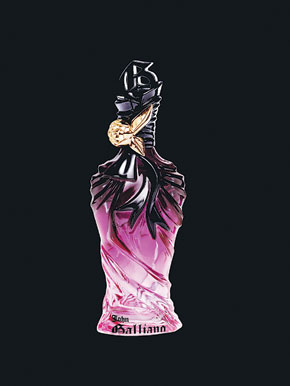
 make light the significance and impact of perfumes in all our lives.
make light the significance and impact of perfumes in all our lives.When purchasing any type of fragrance, one has to be aware not
has to be aware not  just of scents but also of concentration categories to determine if one is indeed getting value for money. A perfume is mostly composed of fragrant materials added to a choice base or carrier. The base can be perfumer's alcohol or other neutral no-scented solvents like jojoba oil or coconut oil, just to name a few. It is important for the consumer to understand concentration levels to determine just how potent and lasting a fragrance is once sprayed.
just of scents but also of concentration categories to determine if one is indeed getting value for money. A perfume is mostly composed of fragrant materials added to a choice base or carrier. The base can be perfumer's alcohol or other neutral no-scented solvents like jojoba oil or coconut oil, just to name a few. It is important for the consumer to understand concentration levels to determine just how potent and lasting a fragrance is once sprayed.
Both Eau de Toilette and Eau de Parfum are the most common fragrance concentration levels used in the business. Aside from that these two, there are several other types with varying levels of potency.
potency.
Eau de Parfum is the second highest level of fragrance concentration. It is also known as Eau de Perfume or Millesime. Fragrances classified under this level have a concentration of anywhere between 10 to 20%, 15% being the most commonly used.
On the other hand, Eau de Toilettes have lower fragrance concentrations (around 5 to 12%; 10% being the average) and are the most common version sold in department stores for the brands they stock. Also referred to as toilette water, perfumes classified at this level of concentration usually have high alcohol content and is considered a weak perfume because of its more diluted state.
Most toilette waters use floral notes as their principal scent and theme (florals are more frequently used than any other types of scents in creating a body splash fragrance and after bath or shower products). As can be expected, an Eau de Toilette scent, due to its diluted nature, actually fades faster as compared to Eau de Parfum fragrances.
Not surprising, an Eau de Parfum is definitely more expensive than Eau de Toilette fragrance. Regardless of price however, for people who can afford to pay a bit more, Eau de Parfum are the way to go. As far as they are concerned, purchasing a more concentrated and long lasting perfume is money well spent.
For those who prefer the less concentrated fragrances, there are several options out there offered by the perfume making industry. The most popular alternatives being, flower waters, cologne and body splash. Experts have also found that some fragrance waters like those from roses, lavender and jasmine actually have some health benefits. Some are used as a restorative skin toner, relaxation aide and energy boosters during stressful periods.
History has also shown that fragrant flowers waters were used as a medicinal tonic to ward off the bubonic plague during the 15th to 16th centuries. Some well-known types of toilette waters throughout history are Carmelite water (prepared by the Carmelite nuns in 1379 for King Charles of France), Eau de Lavand Ambre (a scented Spanish concoction used for both the hair and the skin), and Kananga water (considered by Jamaicans as a holy water used for purification purposes and other sacred ceremonies.)
Whatever type of perfume one chooses, it's all down to a case of preference and taste. The important thing is the enjoyment that a perfume can bring to the wearer, regardless of age, race or gender.
No comments:
Post a Comment